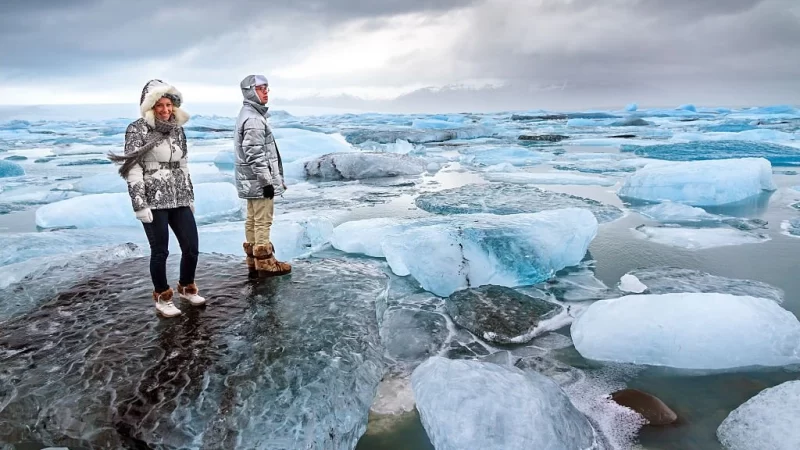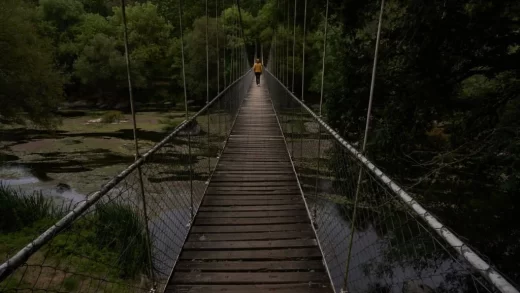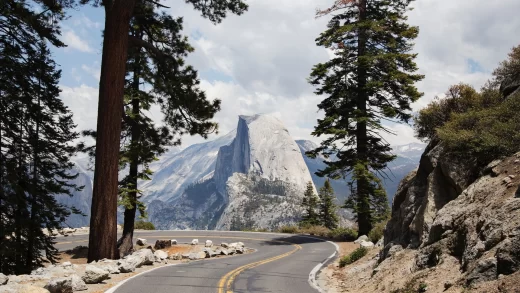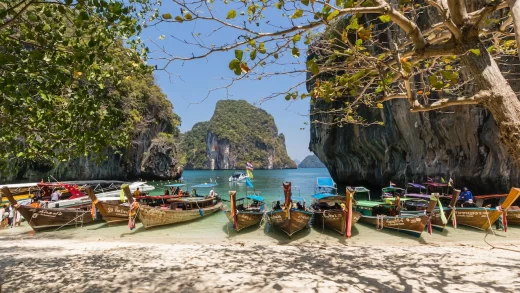Best Time To Visit Iceland | Seasons, Whale Watching & Discount Guide

Best time to visit Iceland: For the finest weather, the fewest tourists, and other factors, these are the best dates to visit Iceland.
Travel may be challenging at the moment, but utilize these imaginative vacation suggestions to organize your next bucket list excursion.
Travelers are highly advised to research any COVID-19-related local government regulations, policies, and safety precautions before setting out, as well as to evaluate their own comfort levels and health status.
As tourists become more familiar with the mystical — and very Instagrammable — vistas of old glaciers and craggy fjords, Iceland has grown to be one of Europe’s “it” destinations.
You should consider everything you want to see and do on your vacation before you book your travel to this well-known island country since the time of year may greatly affect what is accessible.
While certain tourist destinations, like Iceland’s well-known hot springs, are available all year round, others, like the northern lights and the midnight sun, are best seen at particular seasons.
The ideal times to go to Iceland are during these seasons if you want to see whales, the northern lights, and more.
When To Visit Iceland For The Best Weather?
Iceland has its hottest weather in the summer, which is why July and August have traditionally been the busiest travel seasons.
And June attracts almost as many visitors as the height of the summer due to its constant daylight.
However, poor weather (rain and strong winds) is not unheard of even during this season. You may often experience all four seasons in a single day due to the island’s unpredictable environment.
Planning a trip to Iceland in September might be great since the country can be quite mild into the first week of October (most of the crowds have thinned as children return to school). May offers plenty of daylight for sightseeing and milder temperatures as well.
However, it may not be the greatest time to go if you’re interested in visiting some of the more isolated hills and fjords, since some routes are still blocked while they thaw from the winter’s snowy cover.
The summer months in Iceland are ideal for serious hikers since all the mountain roads are open and the most well-known routes are available for travel.
Recommended: Best Time To Visit Hawaii | Cheap, Good & Worst Times Info
Iceland’s Best Season For Whale Watching
The best months to go whale watching in Iceland, according to marine researcher Dr. Edda Elsabet Magnsdóttir of Iceland, are June and July.
You’ll have a longer window to enjoy humpback, minke, and dolphin sightings in northern Iceland from May to August; some humpbacks even stay until the end of the year. Additionally, blue whales travel throughout the summer.
While orcas gather in West Iceland in the Snaefellsnes peninsula during the first half of the year, there are encouraging numbers of minke whales and dolphins in Reykjavik throughout the summer months.
When To Visit The Hot Springs Is Best?
One of the most important aspects of Icelandic culture, both for social and health reasons, are the country’s hot water baths.
The public pools at Reykjavik are available all year round (and are particularly refreshing in the dead of winter), but the island also boasts hundreds of concealed “hot pots” that directly access the geothermal activity under its lava-streaked surface.
Sigurdur Bjarni Sveinsson, a seasoned mountaineer from Iceland and co-founder of Midgard Adventure, advises hot spring seekers to visit them in September or, even better.
The first half of October, when the number of tourists has significantly decreased but they are still all reachable by mountain road.
The greatest time to visit the Blue Lagoon, the most well-known geothermal spa, is in the off-season and shoulder seasons when there are fewer visitors (hundreds of thousands of people flock here every year).
When To Go To Iceland For The Northern Lights
To observe the aurora borealis, you’ll need three key conditions: total darkness, clear skies, and an increase in solar activity.
Viewings are often difficult to come by, like viewing neon-colored wind curtains, particularly when predictions calling for raging flares are clouded over by passing clouds.
Because Iceland’s weather is too unpredictable, visitors shouldn’t plan their vacation there only to see the northern lights in order to prevent disappointment (statistically, there are more clear nights in Yellowknife, Canada, for example.)
By traveling to Iceland from mid-October through March, when there are more hours of darkness, and traveling out into the countryside to lessen ambient light pollution, you may increase your chances of witnessing the northern lights.
Time To Visit Iceland At Its Worst
There is truly never a poor time to visit Iceland because of the wealth of breathtaking landscapes and seasonal natural phenomena the nation has to offer.
Those looking for the northern lights go to the nation in the colder winter months, while those seeking the midnight sun and lengthy daylight hours plan their trip during the summer.
The greatest time to visit Iceland actually depends on what you want to see and do while you’re there, while those who come in the spring and autumn might benefit from more agreeable weather and daylight.
However, if you want to escape the influx of visitors, the hottest months of the year are by far the worst to visit.
The peak travel seasons are July and August when popular destinations like the Blue Lagoon, Golden Circle, South Coast, and Jökulsárlón are very crowded.
Consider traveling to more isolated areas of the island during that time, such as the Westfjords or East Iceland, which offer their own collection of fjords, landscapes, and waterfalls that are at least as stunning as those seen in the area around the city.
Iceland Travel At A Discount
Iceland may really be reached at a reasonable price, particularly when compared to other European locations.
Flight bargains to the island nation are usually available for visitors from the United States and Europe; keep an eye out for promotions on Icelandair to save even more money on your trip.
The cost of lodging, excursions, attractions, and meals may be high throughout the year, but if you go when it’s off-peak, which is often from late autumn to early spring, excluding December, you might be able to save money (the summer months are usually the most crowded and most expensive time to visit).














